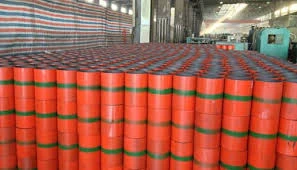- Afrikaans
- Albanian
- Amharic
- Arabic
- Armenian
- Azerbaijani
- Basque
- Belarusian
- Bengali
- Bosnian
- Bulgarian
- Catalan
- Cebuano
- Corsican
- Croatian
- Czech
- Danish
- Dutch
- English
- Esperanto
- Estonian
- Finnish
- French
- Frisian
- Galician
- Georgian
- German
- Greek
- Gujarati
- Haitian Creole
- hausa
- hawaiian
- Hebrew
- Hindi
- Miao
- Hungarian
- Icelandic
- igbo
- Indonesian
- irish
- Italian
- Japanese
- Javanese
- Kannada
- kazakh
- Khmer
- Rwandese
- Korean
- Kurdish
- Kyrgyz
- Lao
- Latin
- Latvian
- Lithuanian
- Luxembourgish
- Macedonian
- Malgashi
- Malay
- Malayalam
- Maltese
- Maori
- Marathi
- Mongolian
- Myanmar
- Nepali
- Norwegian
- Norwegian
- Occitan
- Pashto
- Persian
- Polish
- Portuguese
- Punjabi
- Romanian
- Russian
- Samoan
- Scottish Gaelic
- Serbian
- Sesotho
- Shona
- Sindhi
- Sinhala
- Slovak
- Slovenian
- Somali
- Spanish
- Sundanese
- Swahili
- Swedish
- Tagalog
- Tajik
- Tamil
- Tatar
- Telugu
- Thai
- Turkish
- Turkmen
- Ukrainian
- Urdu
- Uighur
- Uzbek
- Vietnamese
- Welsh
- Bantu
- Yiddish
- Yoruba
- Zulu
bull plug pipe fitting
Understanding Bull Plug Pipe Fittings Key Components in Plumbing Systems
In the realm of plumbing and piping systems, fittings play a vital role in ensuring systems operate efficiently and effectively. Among these fittings, the bull plug is a unique and essential component widely utilized in various applications. Understanding the characteristics, uses, and benefits of bull plug pipe fittings is crucial for both professionals and DIY enthusiasts navigating plumbing projects.
A bull plug, also known as a blind plug, is a type of fitting designed to seal the end of a pipe. It features a tapered design that allows it to fit snugly into a pipe’s end, effectively stopping the flow of fluids. Bull plugs come in various materials, including brass, stainless steel, PVC, and more, allowing them to cater to diverse environment needs. The choice of material typically depends on factors such as the type of fluid being transported, temperature, and pressure conditions.
One of the main reasons bull plugs are favored in plumbing is their straightforward installation. Unlike some other fittings that require complex procedures or special tools, bull plugs can be quickly threaded into place. This ease of installation makes them a popular choice for professionals who need to complete jobs efficiently, as well as for homeowners taking on their own plumbing tasks.
Bull plugs serve multiple functions within a plumbing system. They are primarily used to safely close off pipe ends when a section of piping is temporarily or permanently taken out of service. This is particularly common in industrial settings where maintenance operations are necessary. By securing the ends of the pipes with bull plugs, workers can ensure that no unintended flow occurs, thereby preventing accidents and maintaining system integrity.
bull plug pipe fitting

Additionally, bull plugs can assist in pressure testing systems. Before executing repairs or modifications, plumbers often use these fittings to seal off certain sections, allowing them to test the integrity of a pipeline under pressure. If any leaks exist, they can be easily identified and addressed prior to proceeding with extensive work.
Moreover, bull plugs contribute to the overall safety of a plumbing system. By providing airtight seals, they help to eliminate risks associated with leaks or spills. This is especially crucial in industries dealing with hazardous materials, where even minor leaks can lead to significant safety hazards, environmental issues, or financial repercussions.
One should note, however, that while bull plugs are versatile, they are not intended for situations where the pipe needs to be frequently accessed or altered. For such circumstances, removable fittings like caps or flanges may be more appropriate. It's important to assess the specific requirements of a project before selecting the type of fitting to use.
In conclusion, bull plug pipe fittings are integral components within plumbing systems, offering reliable sealing solutions for a variety of applications. Their ease of installation, versatility, safety features, and crucial role in maintenance procedures make them indispensable in both residential and industrial contexts. Whether you’re a professional plumber or a DIY enthusiast, having a solid understanding of bull plugs can enhance your plumbing skills and contribute to the successful completion of projects.
-
Well Casing Extension Couplings – Applications and InstallationNewsJun.06,2025
-
Types of Crossover Subs in Drilling & CompletionNewsJun.06,2025
-
Key Features of High-Quality Tubing Pup JointsNewsJun.06,2025
-
Installation and Maintenance Tips for Steel Couplings for PipeNewsJun.06,2025
-
How to Select the Right Pup Joint for Oil & Gas OperationsNewsJun.06,2025
-
Applications of Stainless Steel Pipe CouplingsNewsJun.06,2025







